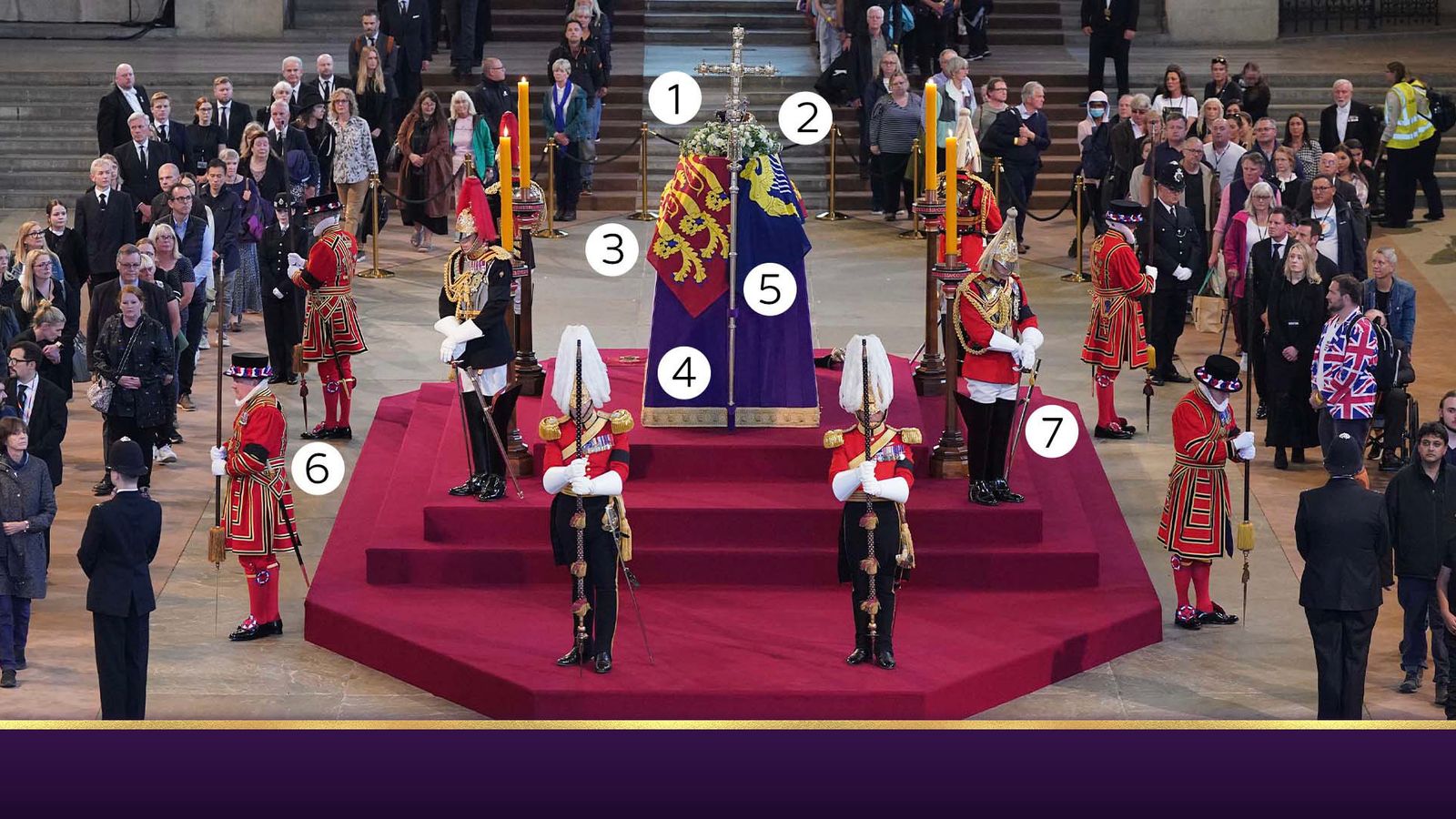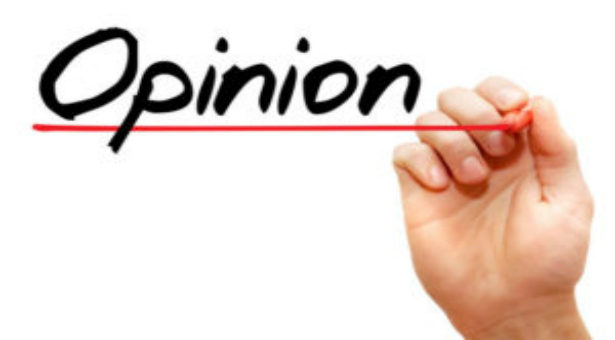It has been seven decades since the death of the previous monarch, so the UK is unaccustomed to the traditions and pageantry that have been on display since the Queen died last week.
After processions and vigils by the Royal Family, it is now the turn of the public to say farewell to the Queen as she lies in state.
Ten of thousands have queued for hours to view her coffin in Westminster Hall, where monarchs have lain in state for more than a century.
Queen lies in state – latest updates
Here is a guide to what to look out for in the hall.
1. Imperial State Crown
The Queen wore the crown at her coronation in 1953. It has also been used on other occasions such as the state opening of parliament.
The crown is made of gold and set with 2,868 diamonds, 17 sapphires, 11 emeralds, 269 pearls and four rubies.
It contains jewels including the Black Prince’s Ruby, the Stuart Sapphire and the Cullinan II diamond.
St Edward’s Sapphire, set in the centre of the topmost cross, is said to have been worn in a ring by St Edward the Confessor and discovered in his tomb in 1163.
The crown was created for the coronation of the Queen’s father, King George VI, in 1937.
2. Flowers
Next to the crown is a wreath of flowers.
The flowers are white roses, spray white roses, white dahlias, and foliage, including pine from the gardens at Balmoral and pittosporum, lavender and rosemary from the gardens at Windsor.
3. Royal Standard
The coffin is draped with a Royal Standard, which represents the sovereign and the United Kingdom.
The Royal Standard was flown when the Queen was in residence in one of the royal palaces, on the Queen’s car on official journeys and on aircraft (when on the ground).
On the flag, there are four quarterings – England (three lions passant) in the first and fourth quarters, Scotland (a lion rampant) in the second quarter and Ireland (a harp) in the third quarter.
Wales is not represented in the Royal Standard, as its special position as a principality was recognised by the creation of the Prince of Wales long before the incorporation of the quarterings for Scotland and Ireland in the Royal Arms.
In Scotland, a different version of the Royal Standard is used, with Scottish arms in the first and fourth quarters and English arms in the second.
4. Catafalque
After the coffin was carried by eight guardsmen into Westminster Hall, they lifted it into place on the catafalque, which is a raised platform.
The catafalque is surrounded by four big yellow candles.
5. Wanamaker cross
Standing at the head of the coffin is the Wanamaker cross.
It is one of Westminster Abbey’s four processional crosses, and is made from ivory and silver gilt, and adorned with a series of panels of beaten gold and sapphires.
On one side, the panels show the crucifixion with representations of the annunciation, nativity, resurrection and ascension on the arms of the cross.
On the other side is Jesus Christ, with groups of apostles on the cross arms. Smaller panels show emblems of the evangelists and figures of angels.
6. Beefeaters
Among those guarding the coffin are four Yeoman Warders, also known as beefeaters.
They normally guard the Tower of London.
7. Household Cavalry
Members of the Household Cavalry are also guarding the coffin.
The Household Cavalry is a union of the two most senior regiments in the British Army – The Life Guards and The Blues & Royals.
It is divided into the Household Cavalry regiment and the Household Cavalry mounted regiment.
The Household Cavalry regiment is the operational unit, providing armoured reconnaissance.
The Household Cavalry mounted regiment is the ceremonial face of the regiment, carrying out mounted state and public duties in London.
Among the other soldiers guarding the coffin are members of the Grenadier Guards.
Read more:
Queen leaves Buckingham Palace for final time
In pictures: Meghan joins Royal Family in coffin procession








